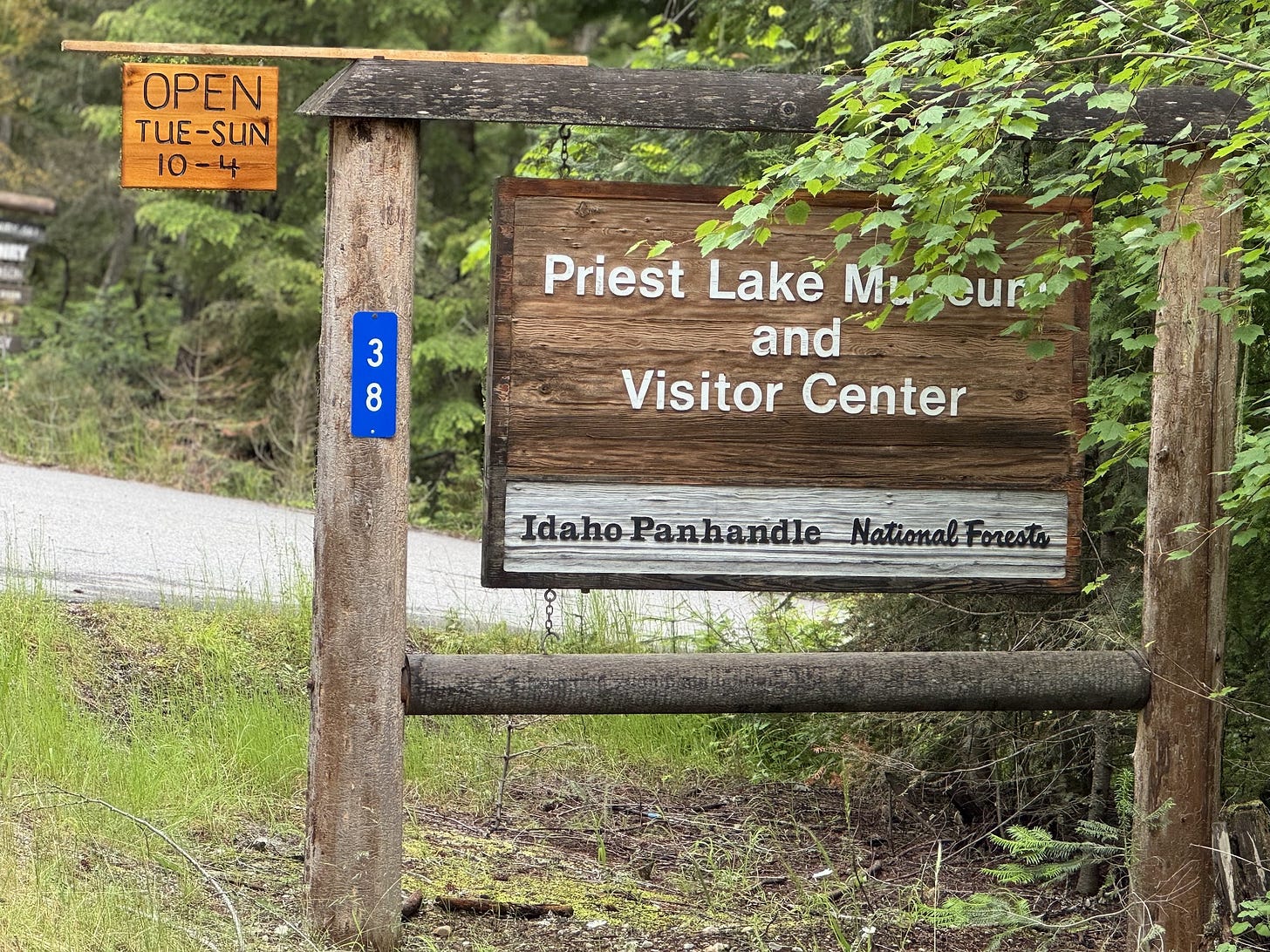A place to explore: The Priest Lake Museum, way up in Northern Idaho
Some people love the mountains, some prefer lakes. I like both. My favorite mountain lake is Priest Lake, up in Northern Idaho.
Mountain lakes aren’t for everyone. If you love the solitude of the mountains, then the clusters of resorts and cabins and water-skiers might annoy you. If you are a lake-life aficionado (especially if you are from the South or the Midwest) then the freezing temperatures of mountain lakes might leave you blue.
Also there is always this possibility:
For summer days when thunderstorms roll over your favorite mountain lake, it’s good to have a museum to visit.
The Priest Lake Museum (just west of Hill’s Resort on Luby Bay), is a delightful little treasure. It’s open only during the summer, and run by a dedicated staff of volunteers. The three rooms feature an A-Z exhibit, a main room featuring wildlife and chronologically organized photos/information, and a third room set up with artifacts from cabins of the past. There are also several outdoor exhibits.
A beach trail runs just in front of the museum, with a sandy beach area just beyond.
This also completes the “historic house museum” square of Annette’s Summer Museum Bingo! Yay!
A book to read: WILD PLACE: A History of Priest Lake, Idaho by Kris Runberg Smith and Tom Weitz
With over 200 photographs, this is the definitive history book on Priest Lake. The book and the museum tell the same story, so the book is a great way to amplify a museum visit.
Missionaries in the 1840s tried and failed to convince the Kalispel to take up farming and/or move out to Montana, but most returned to Priest Lake and their nomadic ways. Luckily, the hard-to-reach location kept white settlers at bay for centuries.
There are chapters on early tourists (a group of tourists from New York looking for adventure explored the lake in the 1880s), attempts at mining (getting the minerals to the nearest train station and then to market proved problematic), and early homesteaders.
This being the Pacific Northwest, there are the typical trials regarding forests: fires, logging rights, land management discussions with the federal government, and trying to contain blister rust, a fungus that attacks the white pine forest surrounding the lake.
During Roosevelt’s New Deal, CCC programs reached the lake to fight the blister rust, build fire towers (which were quickly rendered obsolete once air patrol took over fire watch) and create recreational sites.
The end of the book features resorts and tourism photos that start to look a lot like my grandma’s photo album.
It’s a delightful read in between hikes, sand castles, and kayak rides.
A lesson to teach:
Unfortunately, I don’t teach US History, or else I’d squeeze some photo analysis of the Civilian Conservation Corps photographs into a New Deal unit (check out online photos here). CCC workers even built the 1935 cabin that houses the Priest Lake Museum.
When teaching with photographs, I always use this photograph analysis chart. Here is a few slides explaining how to complete the chart, using a photograph I took at the museum.
Happy reading, exploring and teaching y’all!! See ya next week :)







I was enjoying the post about the museum as it was, but then you ended it with an amazing classroom activity! I teach AP Language where we analyze all sorts of "texts," including photographs. Your guide is so much better than my open-ended "So what do you see? approach. Thank you so much for sharing both your lake experiences and your lesson.